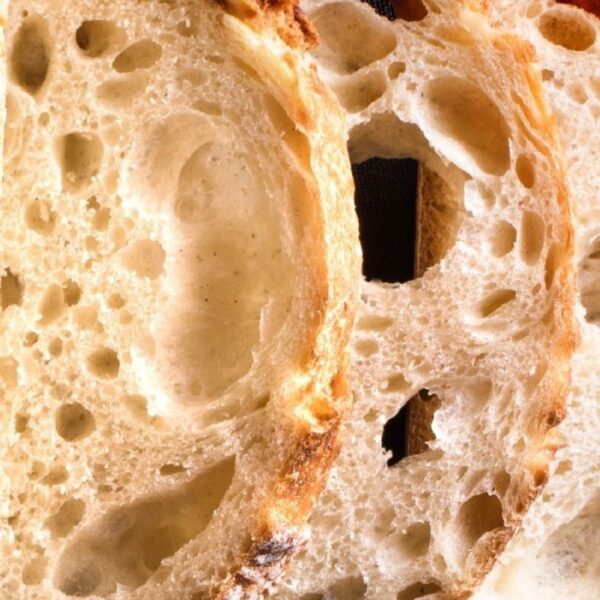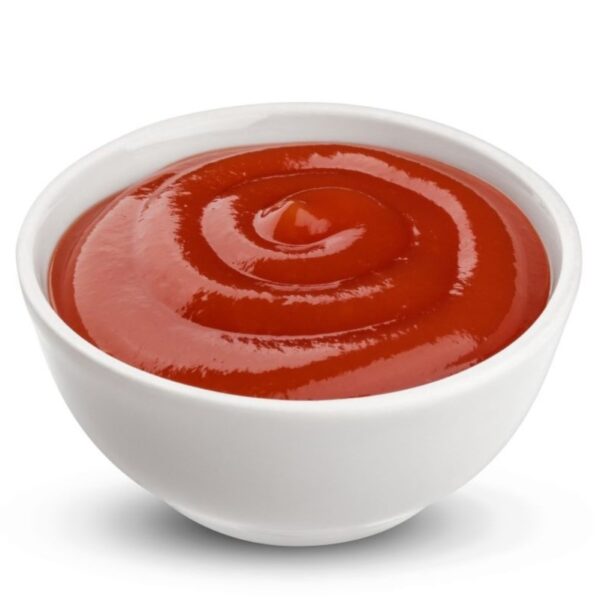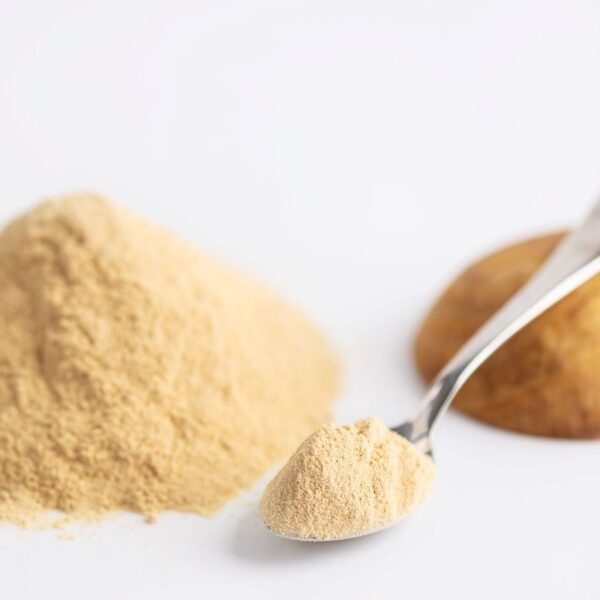Mannitol is a naturally occurring sugar alcohol that is commonly used as a sweetener. It is found naturally in various fruits and vegetables, such as mushrooms, celery, and watermelon. D-mannitol is the D-enantiomer of mannitol. D-mannitol is about 60-70% as sweet as sucrose and about as sweet as glucose. It may be used as a reduced-calorie sweetener instead of sugar by those on a low-carbohydrate diet or those with diabetes. Mannitol is safe and does not promote tooth decay.
What is Mannitol?
Mannitol is a six-carbon, linear, simple, and polyhydroxy sugar alcohol. It is a low molecular weight compound. Its chemical formula is C6H14O6.
Source: Wikipedia
How is Mannitol Produced?
Mannitol is the most abundant polyol in nature. Some bacteria, fungi, and brown seaweed contain mannitol as a reserve carbohydrate. Additionally, many plants are known to store mannitol in various tissues.
Mannitol can be produced in two ways: fermentation and chemical hydrogenation.
Fermentative Production — The fermentative production of mannitol involves using microorganisms such as yeasts and bacteria to convert sugars into mannitol through fermentation. In batch fermentation, a mixture of glucose (75 g/L) and fructose (150 g/L) in a ratio of 1/2 is converted to mannitol, lactic acid, and acetic acid. The conversion efficiency of fructose into mannitol is over 90%. Through this process, the glucose is converted to lactic acid and acetic acid, and the fructose is converted to mannitol. The enzyme responsible for converting fructose to mannitol is NADPH- or NADH-dependent mannitol dehydrogenase.
Synthetic Production — Mannitol can also be produced by chemical hydrogenation of fructose in the presence of Raney nickel (Ni metal 2 mg/kg) at a high temperature and pressure (100°C-150°C and 100-150 lb). This process results in the formation of racemic products, mannitol and sorbitol. With HFCS (high fructose corn syrup) as a substrate, glucose is hydrogenated to sorbitol, while fructose is converted to mannitol. The use of pure fructose as a substrate yields pure mannitol (48%-50%).
Applications in the Food Industry
| Function | Role |
| Bulking Agent | Adds volume to food products without significantly adding calories |
| Emulsifier | Helps to stabilize mixtures of two immiscible liquids, such as oil and water |
| Stabilizer | Helps to prevent unwanted changes in the texture or consistency of food products over time |
| Thickener & Texturizer | Helps to thicken the consistency of food products |
| Humectant | Helps to retain moisture in food products |
Product Examples
| Type | Examples |
| Bakery | Cake, Pastry, Cookies, Bread |
| Confectionery | Chewing Gums, Soft Chews, Gummy Bears, Crystal Candies |
| Dairy | Yogurt, Ice Cream |
| Beverages | Juices, Soft Drinks |
| Convenience | Jams, Jellies, Cereals, Fruit Preserves |
Properties of Mannitol
| Molecular Weight | 182.172 g/mol |
| Melting Point | 167-170°C |
| Heat of Solution | −121 kJ/kg |
| Physical Form | Powder, crystals (granules), syrup |
| Solubility (25℃) | 216 mg/ml |
| Calorific Value | 1.6 Cal/g |
| Relative Sweetness w.r.t Sucrose | 50-60% |
| Glycemic Index | ~2 |
| Shelf Life | 24-36 months |
| GMO Status | GMO/ Non-GMO |
| Claims *Subject to product claims | Kosher, Halal, Dairy-free, Sugar-free, Non-cariogenicPlant based*, Organic*, Non-GMO*, Natural*, Allergen-free* etc. |
| Storage Requirements | Cool, dry, dark place <40℃) |
| Specific Rotation | Optically inactive |
Typical Formulations
Chewing Gum
Here is an example formulation of chewing gum with mannitol along with % composition of ingredients:
| Ingredient | % Composition |
| Crystalline sorbitol | 23.6 |
| Glycerin | 9.88 |
| Gum base | 23.2 |
| Mannitol | 4.77 |
| Talc | 2.0 |
| Flavor | 1.65 |
| Aspartame | 0.34 |
| Spray dried peppermint flavor | 0.25 |
| Coevaporated lycasin | 9.31 |
| Sugarless syrup blend (evaporating 65% liquid sorbitol, 30% glycerin, and 5% mannitol to 98% solids) | 25 |
Source: Google Patents
Gummy Candies
Here is an example formulation of gummy candies with mannitol along with % weight composition of ingredients:
| Ingredient | % Composition |
| Mannitol | 21.135 |
| Nutriose (soluble wheat fiber) | 21.135 |
| Maltitol syrup | 54.17 |
| Gelatin solution | 8.13 |
| Citric acid | 2.43 |
| Colorant | 0.001 |
| Aroma | 0.25 |
| Water | 22.51 |
Source: Science Direct
Low-Calorie Beverage
Here is an example formulation of a low-calorie beverage with mannitol along with % weight composition of ingredients:
| Ingredient | % Composition |
| Citric acid | 45.0 |
| Mannitol | 37.1 |
| Trisodium citrate | 8.0 |
| Sodium cyclamate | 5.6 |
| Saccharin | 0.9 |
| Tricalcium phosphate | 2.1 |
| Fruit flavor | 1.0 |
| Fruit color | 0.3 |
Source: Google Patents
Formulation Considerations
Stability
In contrast to sorbitol, mannitol is not hygroscopic. Mannitol recrystallizes from solutions greater than 10% w/v in ambient conditions. Mannitol degrades when heated above its melting temperature (168°C). Antioxidants can improve stability compared to pure d-mannitol under air but cannot completely stop degradation.
Sensory Properties
| Physical Form | Liquid, Powder, Crystals |
| Color | White |
| Taste | Sweet taste with a cooling sensation, with no aftertaste or off-taste. Sweetness appears quickly but has a relatively short persistence. |
| Odor | Odorless |
Use as a Sugar Substitute
Mannitol is a sugar alcohol commonly used as a sugar substitute. Mannitol offers several benefits:
- Unlike acesulfame K, neotame, aspartame, and saccharin, mannitol provides bulk and sweetness.
- Mannitol is an excellent humectant and texturizing agent.
- Mannitol does not contribute to dental cavities.
- Mannitol may be helpful for people with diabetes as its glycemic index is ~2.
- The caloric value of mannitol is lesser compared to many sugar alcohols.
- Mannitol does not pick up water from the air until the humidity level reaches 98%. This makes mannitol very useful as a coating for hard candies, dried fruits, and chewing gums.
The following table compares the properties of mannitol with other sugar alcohols:
| Sugar Alcohol | Calorific Value (kcal/g) | Relative Sweetness (to Sucrose) | Glycemic Index |
| Maltitol | 2.1 Cal/g | 80-90% | ~35 |
| Erythritol | 0.2 Cal/g | 60-70% | ~0 |
| Xylitol | 2.4 Cal/g | 80-100% | ~13 |
| Sorbitol | 2.6 Cal/g | 50-60% | ~9 |
| Mannitol | 1.6 Cal/g | 50-60% | ~2 |
| Sucrose | 4.0 Cal/g | 100% | ~65 |
A detailed comparison of all sugar alcohols can be seen here.
Mannitol has a few drawbacks for use as a sugar substitute, which should be taken into consideration:
- High caloric value
- Not stable to crystallization
- Lower relative sweetness compared to xylitol and maltitol
Metabolism, Absorption, and Excretion
| Absorption | – Mannitol is reportedly antiketogenic, and therefore glycogen forming, but only one-fourth as effective as glucose. Its partial conversion to glycogen happens in the liver. Since mannitol and sorbitol in more significant amounts, escape absorption, they would be attacked by the bacterial populations of the lower gastrointestinal tract with the production of the volatile fatty acids. |
| Metabolism | – The absorption of mannitol is passive and dependent largely on the sugar concentration in the periphery of the lumen. – Mannitol is absorbed slowly from the gastrointestinal tract of human beings. Unlike glucose, the temporal profile of mannitol absorption is not augmented by hormonal effects, such as those from insulin/incretin. |
| Excretion | – Mannitol is reportedly antiketogenic, and therefore glycogen forming, but only one-fourth as effective as glucose. Its partial conversion to glycogen happens in the liver. Since mannitol and sorbitol in more significant amounts escape absorption, they would be attacked by the bacterial populations of the lower gastrointestinal tract with the production of the volatile fatty acids. |
Safety and Regulatory Considerations
| FDA Information | Mannitol is permitted as a food additive by the FDA as an anticaking agent, firming agent, flavoring agent, adjuvant, lubricant, release agent, nutritive sweetener, stabilizer, thickener, and texturizer. |
| EU Information | The EU authorizes using mannitol as a food additive with food additive number E 421. Mannitol obtained by hydrogenation is numbered E 421(i), whereas the mannitol obtained by fermentation is numbered E 421 (ii). |
Health Effects of Mannitol
| Obesity Management | Mannitol may lower body fat accumulation. In a study, when cecectomized rats were fed a 5% mannitol diet, the mannitol lowered the digestibility of fat and the ratio of body fat accumulation to the energy consumed and absorbed. |
| Diabetes Management | Mannitol mostly passes through the intestine and is excreted in the feces since the small intestine absorbs it poorly. Mannitol can be used as a sweetener for diabetic patients as mannitol can provide sweetness to the food without increasing the blood sugar as much as sucrose. |
| Prebiotic Effect | Mannitol can be digested by the gut microbiota. In a study, pre-cultivation with mannitol enhanced the survival and the stress response of Lactobacillus rhamnosus strains in simulated gastrointestinal transit]. |
Safety & Toxicity of Mannitol
Polyols (mannitol, sorbitol, xylitol, maltitol, and erythritol) have known diuretic properties, which may have adverse effects. While their safety as food additives is well-documented, eating them excessively can cause laxative effects and gastrointestinal discomfort, including gas, bloating, and diarrhea.
Identification Numbers
| IUPAC Name | (2R,3R,4R,5R)-hexane-1,2,3,4,5,6-hexol |
| CAS Number | 69-65-8 |
| EC Number | 200-711-8 |
| INS No. (Food Additive) | INS 421 |
| E Number (Food Additive) | E 421 |
Acceptable Limits or Maximum Usage
The FDA has defined the maximum usage level for mannitol in the following food categories:
| Category | Maximum Usage |
| Pressed Mints | 98 % |
| Hard Candy & Cough Drops | 5 % |
| Chewing Gum | 31 % |
| Soft Candy | 40 % |
| Confections & Frostings | 8 % |
| Non-Standardized Jams & Jellies | 15 % |
| All Other Foods | 2.5 % |
The FDA also stipulates, “The label and labeling of food whose reasonably foreseeable consumption may result in a daily ingestion of 20 grams of mannitol shall bear the statement ‘Excess consumption may have a laxative effect.’”
Fun Facts About Mannitol
- Mannitol is used in cosmetics and personal care products for its moisturizing properties. It helps to lock in moisture and keep skin hydrated.
- In healthcare settings, mannitol is used in nebulized form as a medication to help break down mucus in the airways of cystic fibrosis patients, making it easier for them to breathe.








